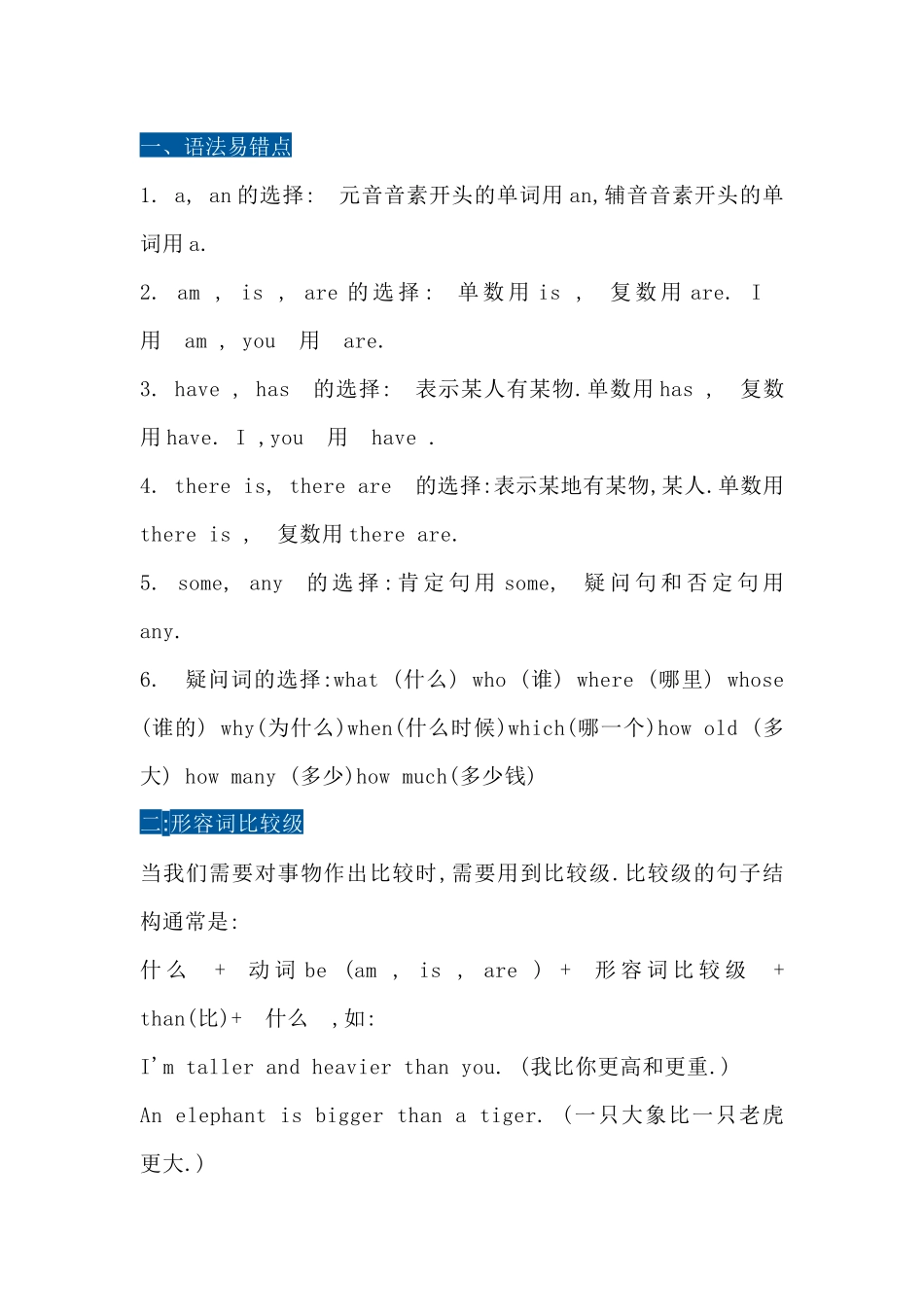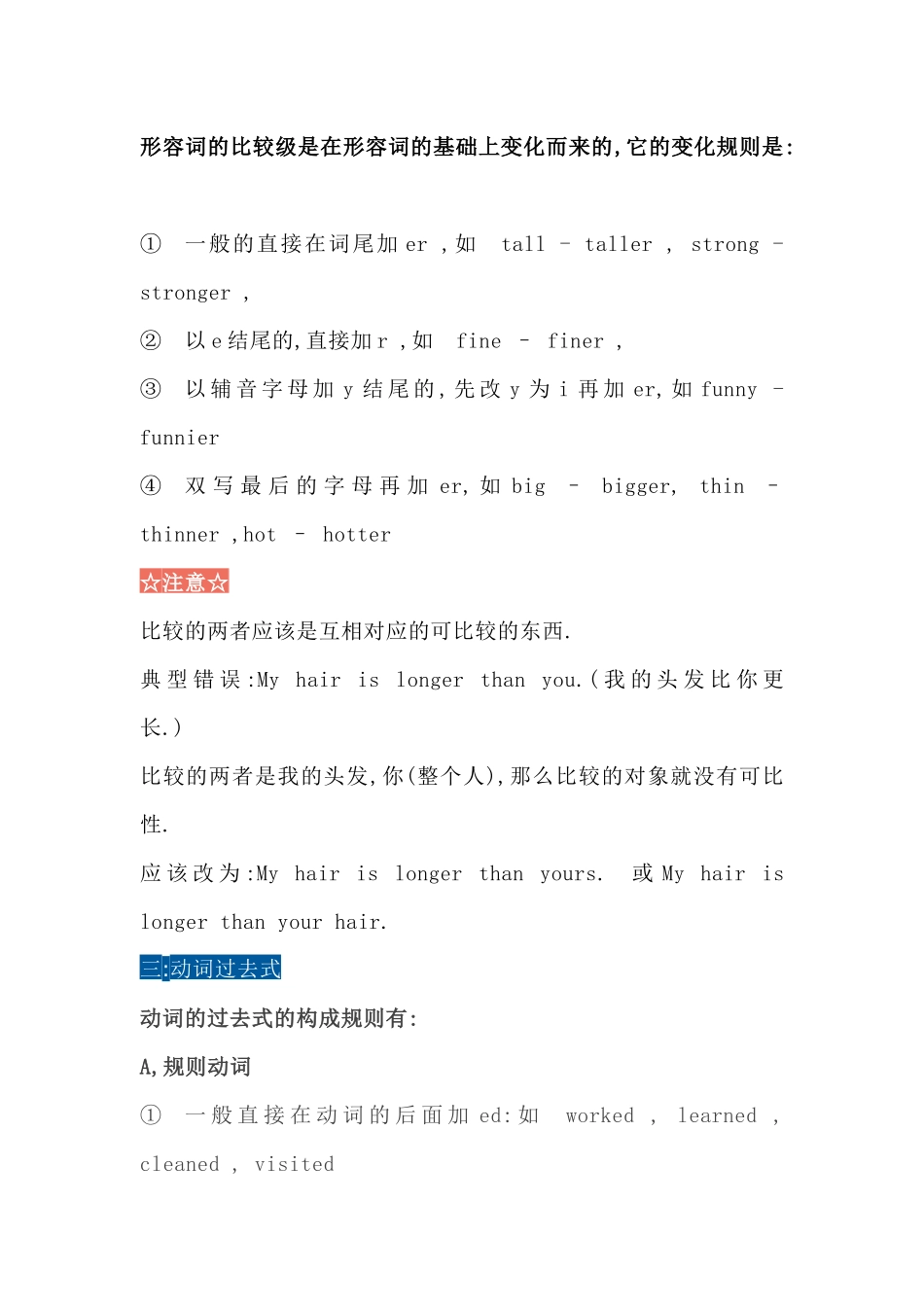一、语法易错点1. a, an 的选择: 元音音素开头的单词用 an,辅音音素开头的单词用 a. 2. am , is , are 的 选 择 : 单 数 用 is , 复 数 用 are. I 用 am , you 用 are. 3. have , has 的选择: 表示某人有某物.单数用 has , 复数用 have. I ,you 用 have . 4. there is, there are 的选择:表示某地有某物,某人.单数用there is , 复数用 there are. 5. some, any 的 选 择 : 肯 定 句 用 some, 疑 问 句 和 否 定 句 用any. 6. 疑问词的选择:what (什么) who (谁) where (哪里) whose (谁的) why(为什么)when(什么时候)which(哪一个)how old (多大) how many (多少)how much(多少钱) 二:形容词比较级当我们需要对事物作出比较时,需要用到比较级.比较级的句子结构通常是: 什 么 + 动 词 be (am , is , are ) + 形 容 词 比 较 级 + than(比)+ 什么 ,如: I'm taller and heavier than you. (我比你更高和更重.) An elephant is bigger than a tiger. (一只大象比一只老虎更大.) 形容词的比较级是在形容词的基础上变化而来的,它的变化规则是: ① 一般的直接在词尾加 er ,如 tall - taller , strong - stronger , ② 以 e 结尾的,直接加 r ,如 fine – finer , ③ 以 辅 音 字 母 加 y 结 尾 的 , 先 改 y 为 i 再 加 er, 如 funny - funnier ④ 双 写 最 后 的 字 母 再 加 er, 如 big – bigger, thin – thinner ,hot – hotter ☆注意☆ 比较的两者应该是互相对应的可比较的东西. 典 型 错 误 :My hair is longer than you.( 我 的 头 发 比 你 更长.) 比较的两者是我的头发,你(整个人),那么比较的对象就没有可比性. 应 该 改 为 :My hair is longer than yours. 或 My hair is longer than your hair. 三:动词过去式动词的过去式的构成规则有:A,规则动词 ① 一 般 直 接 在 动 词 的 后 面 加 ed: 如 worked , learned , cleaned , visited ② 以 e 结尾的动词直接加 d:如 lived , danced , used ③ 以辅音字母加 y 结尾的动词要改 y 为 i 再加 ed(此类动词较少 ) 如 study – studied carry – carried worry – worried (注意 play,...

